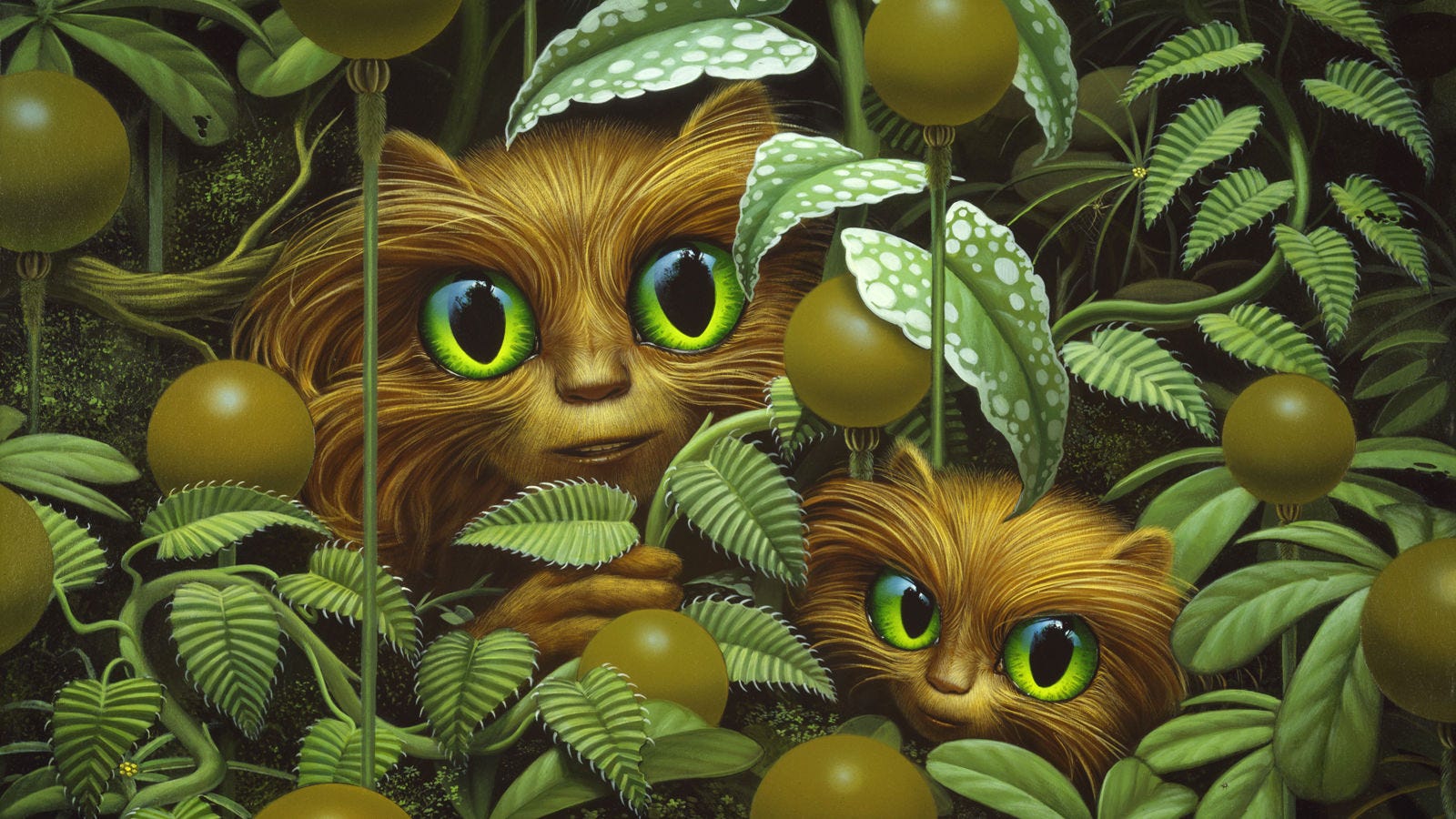
Henry Beam Piper sold his first story to Astounding Science Fiction in 1947.
Primarily a short fiction writer for much of his career, he found success as a novelist late in life with Little Fuzzy in 1962. The tale of first contact became an instant SF classic and was a finalist for the Best Novel Hugo in 1963—an award that ultimately went to Philip K. Dick for The Man in the High Castle.
Strong sales led to the approval of two sequels, but Piper was unable to build on his initial success. When Janet Wood, the editor who acquired Little Fuzzy, was dismissed by Avon in 1963, the project lost its biggest supporter.
Lacking internal support, Fuzzy Sapiens, the next book in the series, was delayed until mid-1964, retitled The Other Human Race, inaccurately blurbed, and inexplicably paired with a cover that didn’t match the story—or the genre!
Commercially, the sequel was a resounding failure, and dismal sales provided Avon with an excuse to cut ties. When the publisher declined the third Fuzzy book, the rejection sent the author reeling.
In November of that same year, Piper committed suicide. He was 60 years old.
Speculation abounds as to the reason why. A friend said Piper had canceled his insurance policy before killing himself to spite his ex-wife. Others say financial hardship following the bitter divorce and fears about his publishing future took an emotional toll. He drank, suffered severe bouts of depression, and refused to reach out to friends for help.
Tragically, Ken White, his literary agent to whom Little Fuzzy was dedicated, died of cancer without informing Piper of multiple sales that he had secured.
Recovering a Legacy
With Piper’s work largely unavailable after his death due to confusion over copyright, he faded into obscurity until Ace Books rekindled interest, securing rights to his catalog and repackaging his work under the editorial direction of Jerry Pournelle.
Pournelle knew Piper. Acquisition of his work was less a bet on the material than an investment in the legacy of a friend. Notably the deal, which totaled a modest sum of $1,000 paid to the author’s estate, included the right to commission new sequels.
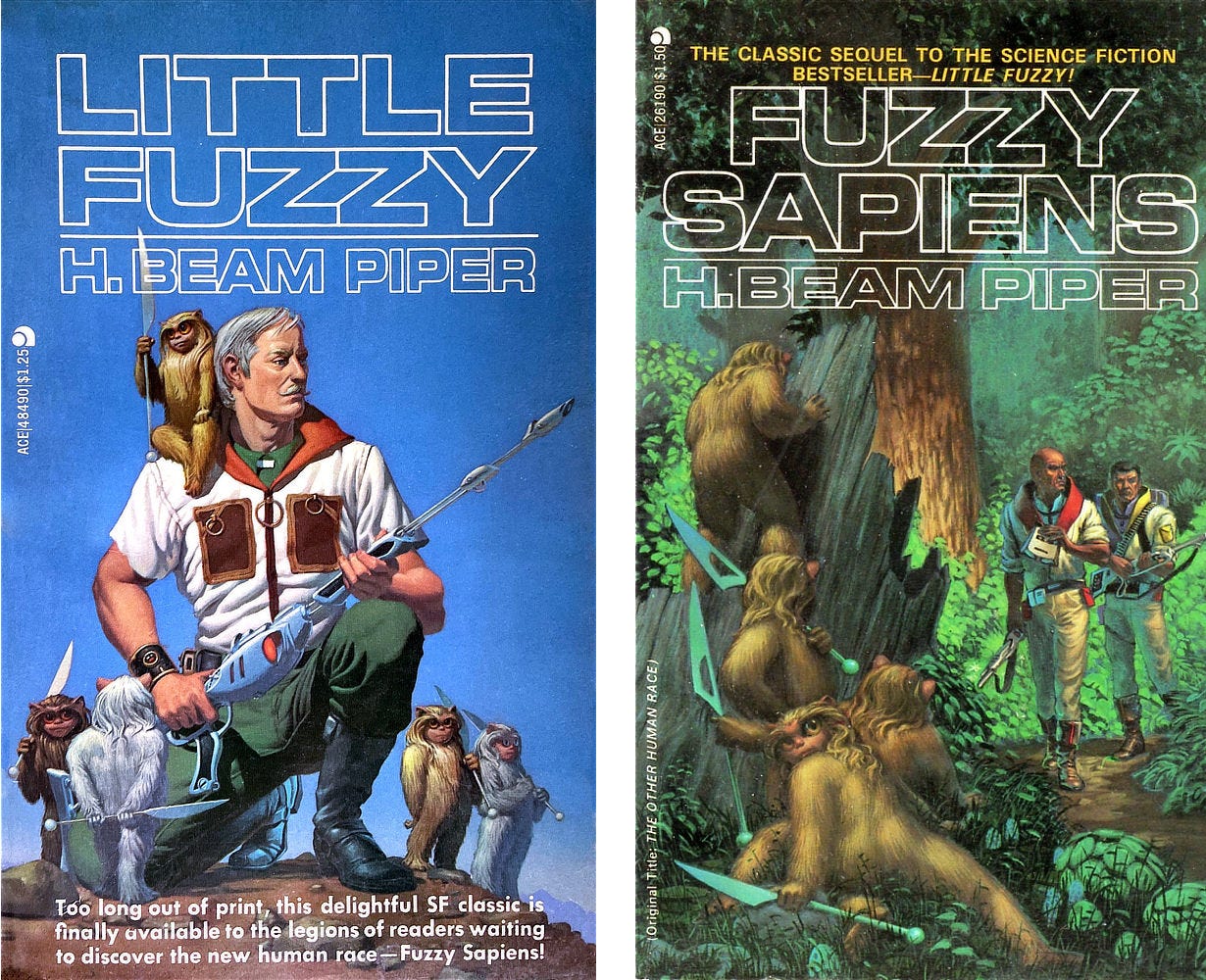
Michael Whelan entered the picture in 1975 when Charles Volpe, the art director at Ace, assigned Little Fuzzy to the rookie illustrator. The repackaged book came out in January of 1976 followed in June by Fuzzy Sapiens, which was restored to the author’s original title.
In 1977, Michael would visit Zarathustra again for The Fuzzy Papers, an omnibus edition collecting the first two novels for the Science Fiction Book Club. The cover may look familiar as the art would appear again with Ace years later.
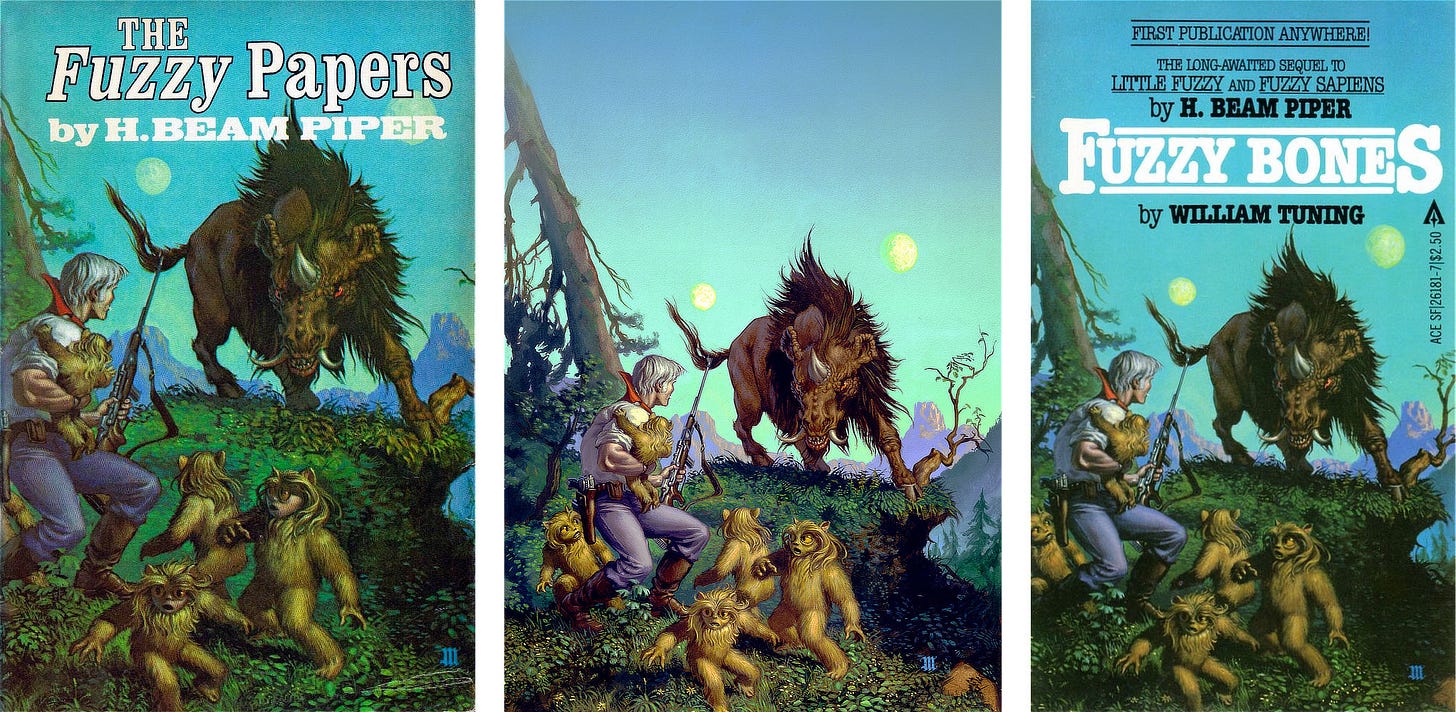
A Fuzzy revival was under way. Fan support prompted Ace to add books to the series. In 1981, they published Fuzzy Bones, a new novel written by William Tuning. Golden Dream by Ardath Mayhar followed in 1982.
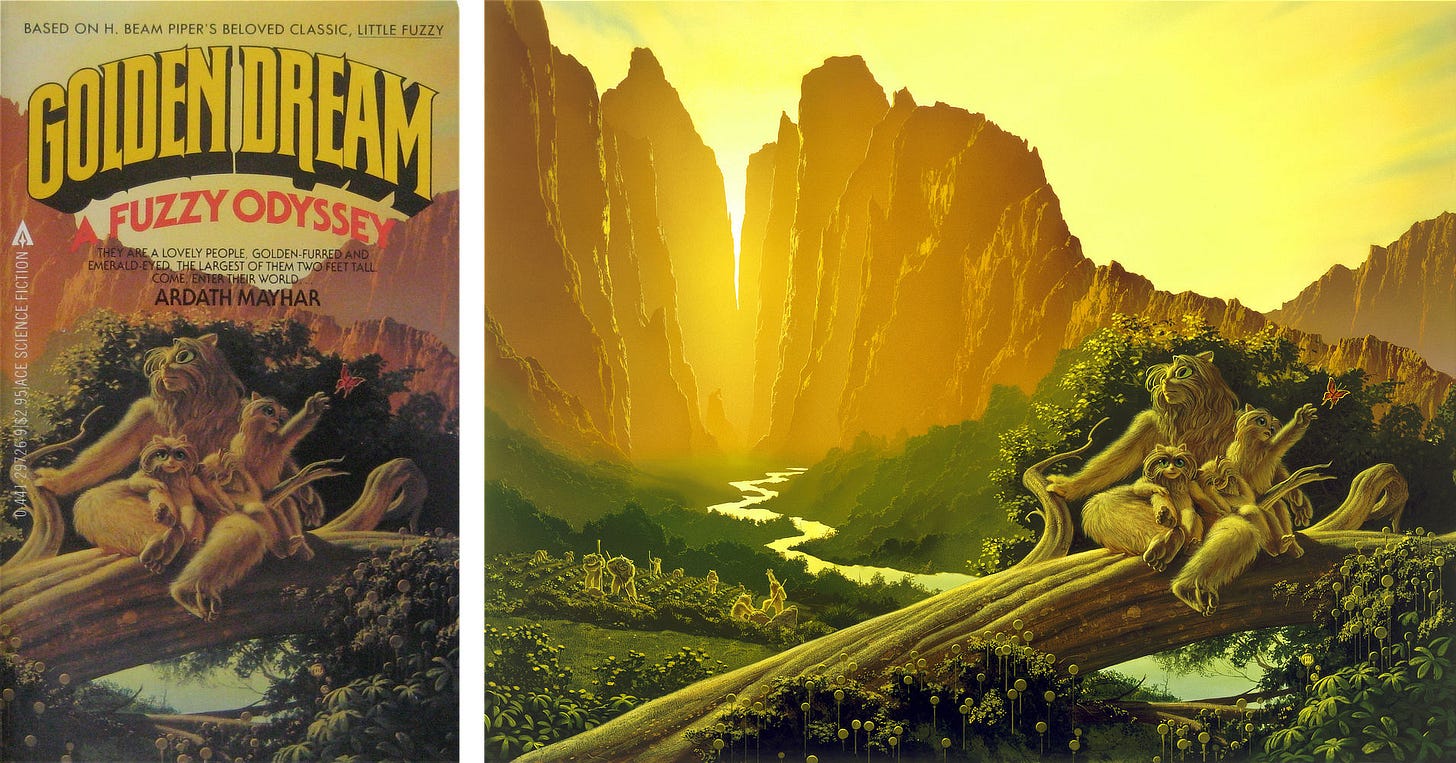
The original story Little Fuzzy was adapted for an illustrated children’s book. Michael provide both the cover and endpapers for The Adventures of Little Fuzzy while David Wenzel, his friend and illustrator of The Hobbit graphic novel, handled interiors.
Over the next decade, Michael would illustrate a dozen covers across the Piper catalog—for the Federation books as well as the Fuzzies. It is no exaggeration to say that his visuals introduced Piper to a new generation of readers.
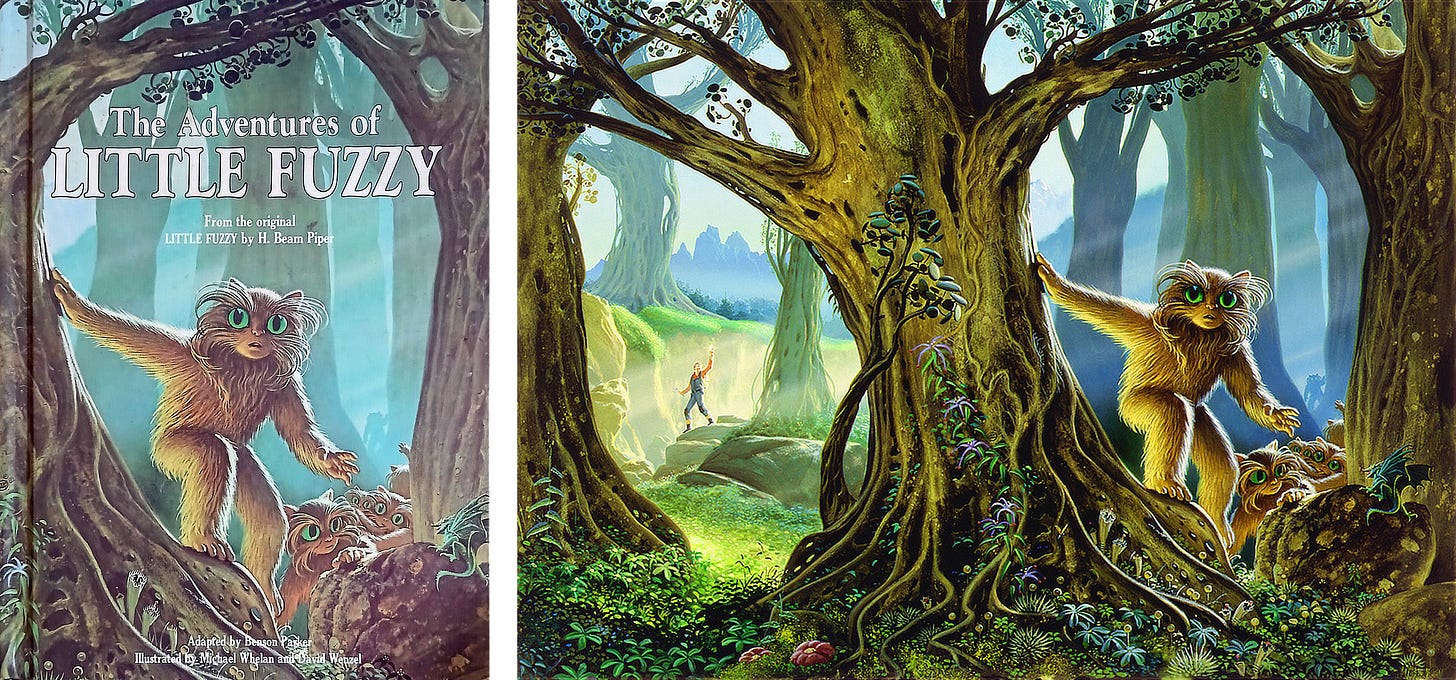
The Lost Fuzzy Manuscript
As mentioned earlier, editor Janet Wood had approved two sequels following the success of Little Fuzzy. Whether that third book was ever completed was a matter of speculation, even among Piper’s friends. For years, rumors circulated about a long lost Fuzzy manuscript written by H. Beam Piper.
His agent Ken White reportedly solicited the third book to Frederik Pohl for serialization after it was rejected by Avon. Pohl declined and returned the manuscript unaware that both the author and his agent had recently died. That manuscript was never seen again.

When Ace finally ran out of Piper stories to repackage, they contacted Michael Kneer, a close friend in possession of the author’s notebooks and records. While he was skeptical that there was anything significant left, he agreed to look. In a manuscript box labeled “Pens and Second Sheets,” he found a carbon copy of the long lost manuscript.
Locus Magazine announced the exciting discovery in October of 1982. Ace set a publication date for the fall of 1983, and Michael was commissioned for one last take on the Fuzzies of Zarathustra, which he titled FUZZY FIRE.
Now that I’ve set the stage, I’ll hand the microphone to Michael for the rest of that story.
Michael Everett
Editor’s note: A wealth of background for this story was gleaned from The Fuzzy Story by Fred Patten (The H. Beam Piper Memorial Site) and The Long Lost “Fuzzy” by Gary Lovisi (Paperback Parade Number 35). Many thanks to those authors for filling in the blanks of events that occurred before my time.
Fuzzies and Other People

I never heard any of those rumors of a missing manuscript. I was doing all sorts of covers for DAW as well. I took each commission in turn as a separate project, and didn’t know that there were going to be so many Fuzzy books as there turned out to be.
The books were spread out over the span of some years, so as each one came out my style and skills were maturing and evolving, which you can see if you put the Fuzzy books in sequence.
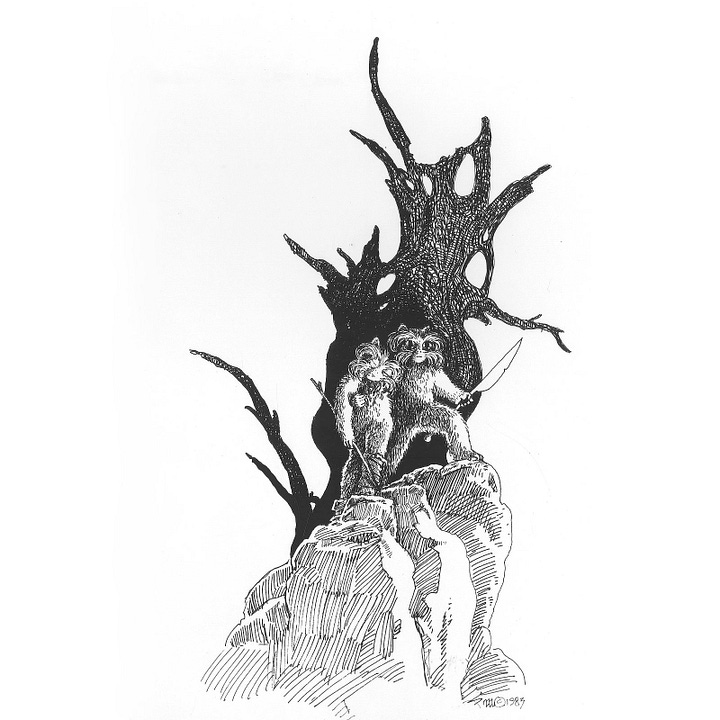
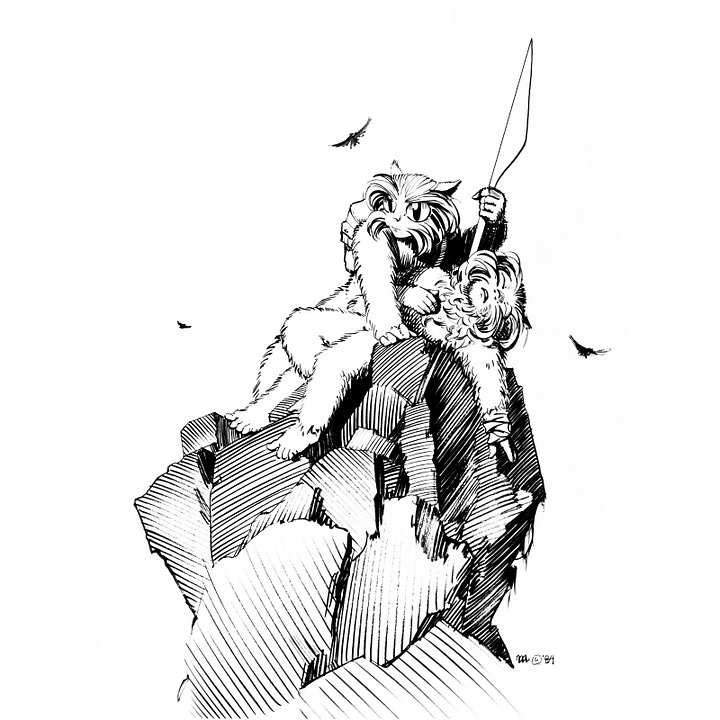
At the same time, my idea of what the little creatures should look like evolved, so the way they look on the first cover is quite different from the way they appear in GOLDEN DREAM, for example.
It always seemed that a new Fuzzy book would need a cover just as I had finished some dreadful horror painting. The timing was good; the change of mood was welcome. Of course, after doing such cute stuff I'd have to get into another “serious” concept for the next work, to balance things out!
Michael Whelan
Additional images from FUZZY FIRE
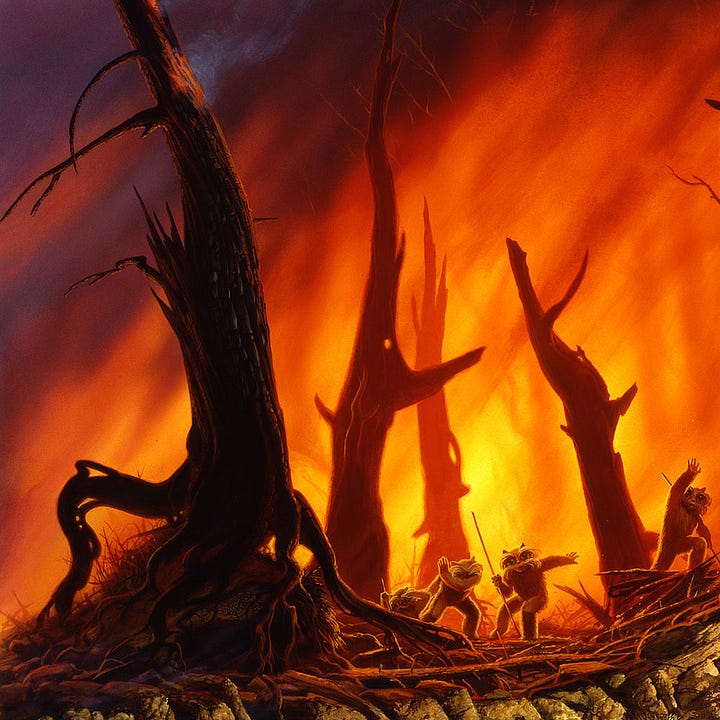

Available in our Shop

Weekly Art Recap
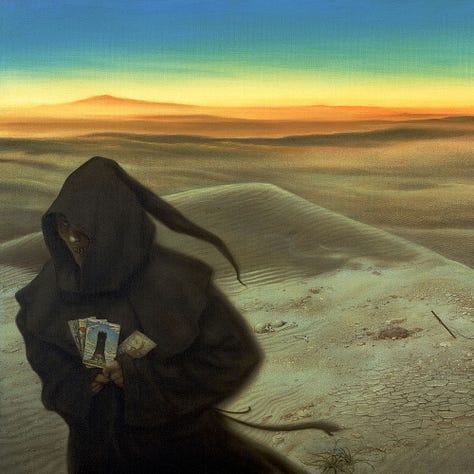


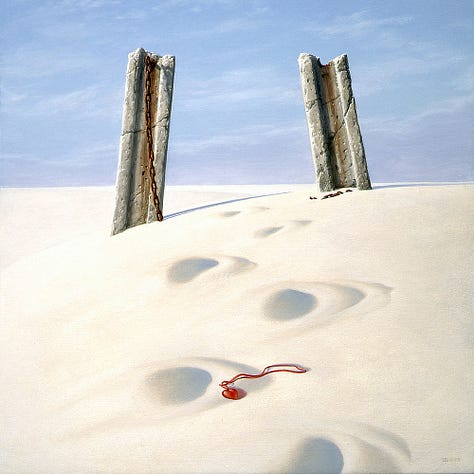


The Man in Black - illustration for The Little Sisters of Eluria by Stephen King
River - a meditation on crossing over to the other shore
Angel of Otherland - concept for Mountain of Black Glass by Tad Williams
Broken Chain - pondering the small marks we leave behind
Dragon Aboard - cover for Dragonwriter, A Tribute to Anne McCaffrey and Pern
The Lost City - inspired by At the Mountains of Madness by H.P. Lovecraft
Coming Soon…
Join us for another terrifying Whelan Wednesday as we return once again to the Antarctic for another preliminary for At the Mountains of Madness.
An exclusive preview of the original art releasing this week will be available for our paid subscribers on Substack before the art is released in our shop on Wednesday, June 11 at 11am ET.
Subscribe so you don’t miss a thing…
If you like in-depth content about Michael Whelan’s art, please consider subscribing. Our weekly newsletters are free, and we offer additional perks for paid supporters.






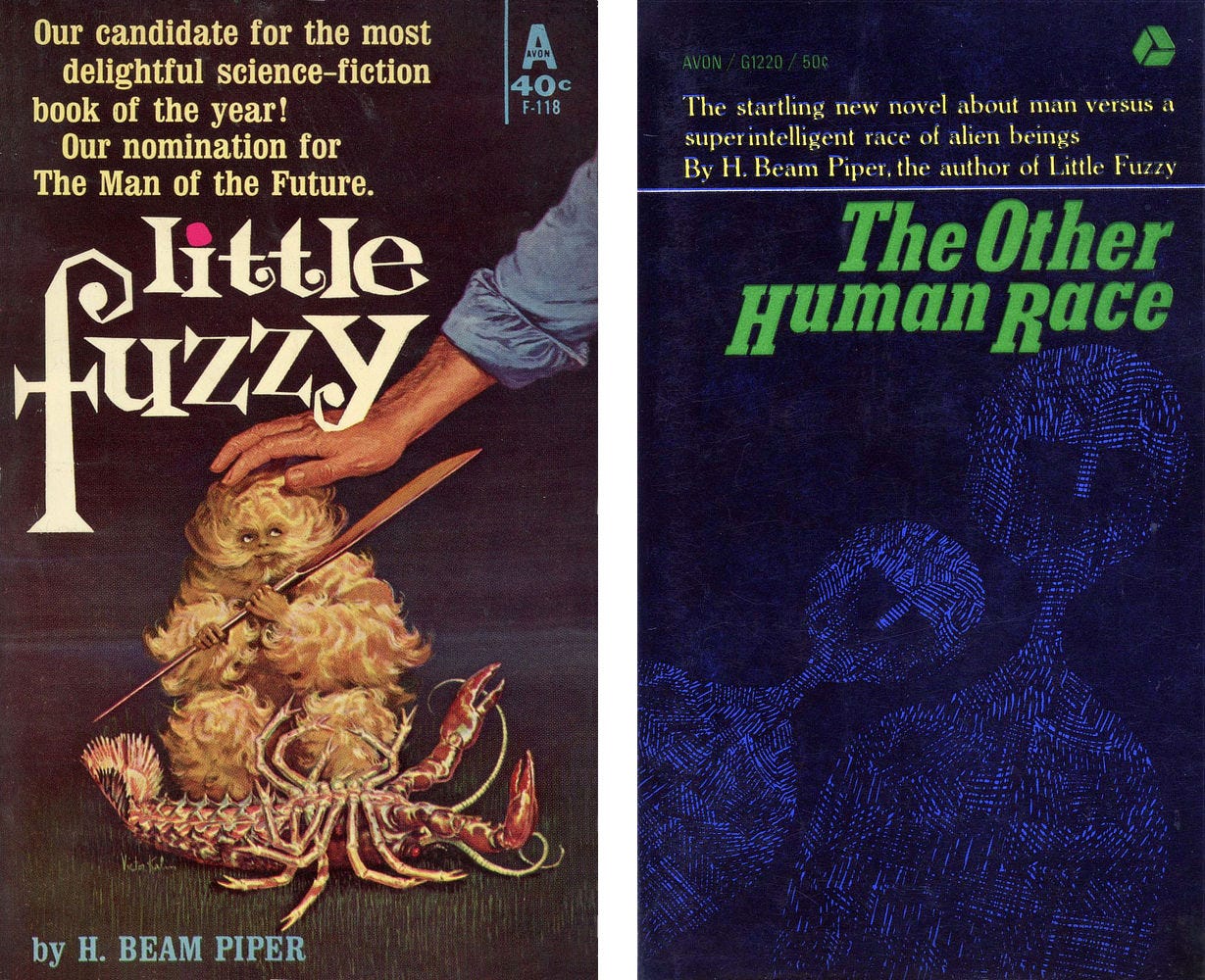
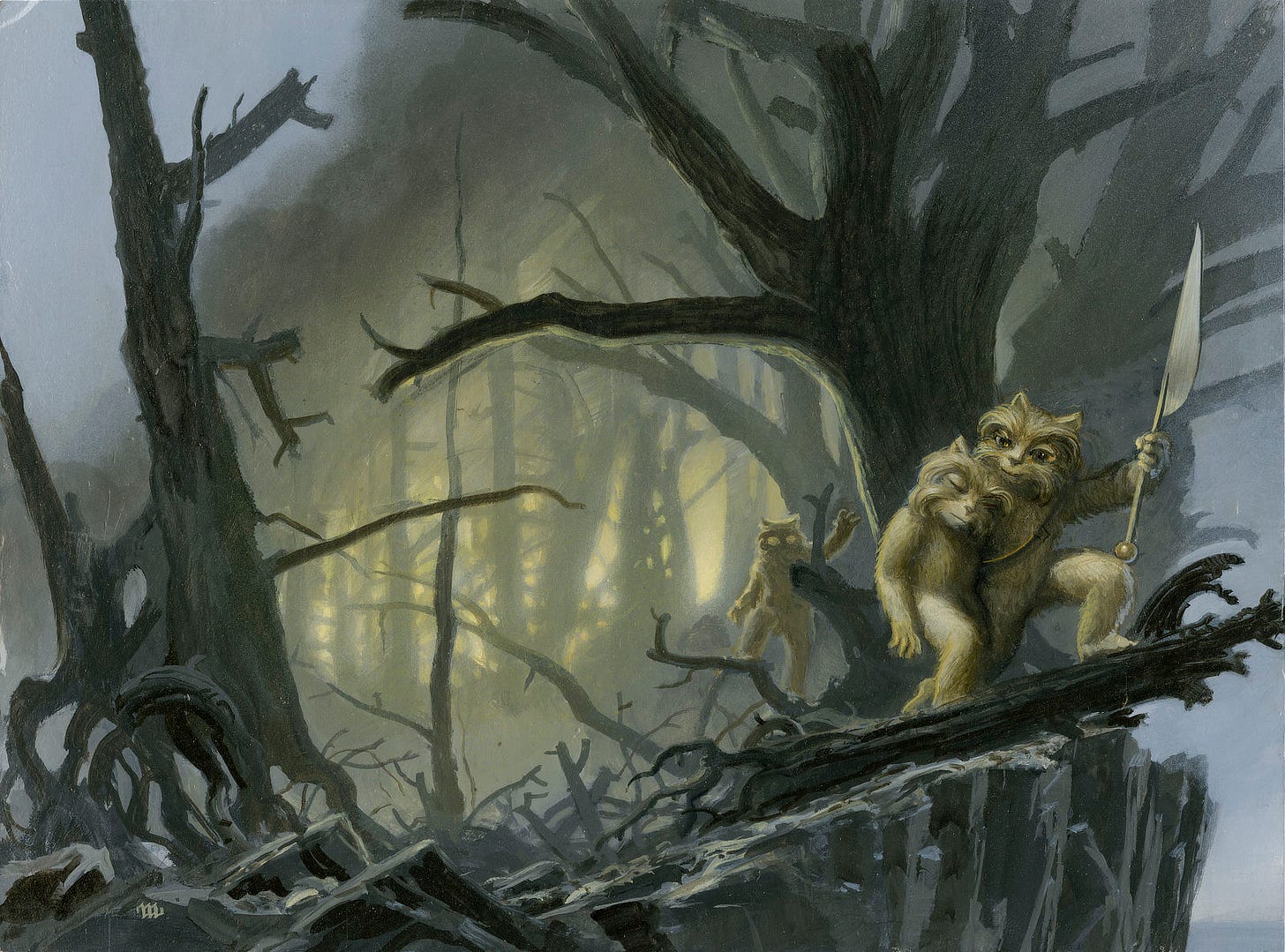


Piper is one of my favorite authors. I love his stories, and yes, Michael’s art is a big part of that. I have that last sketch hanging in our library, along with a print of Fuzzy Dreams.
I have always enjoyed the Fuzzy stories and am glad to have Peekaboo Fuzzies in my hallway. What a sad story about H.Beam Piper though.